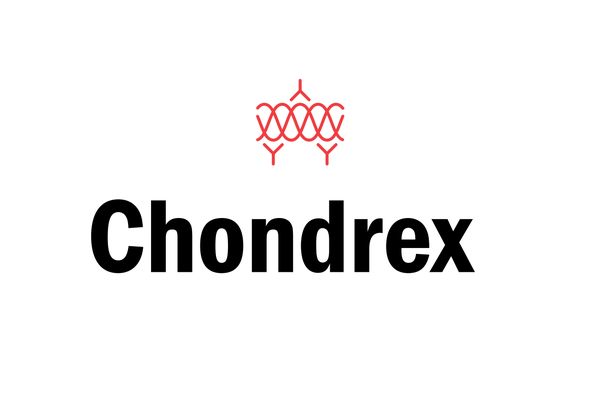Description
Creatinine Assay Kit - Cat Number: 6041 From Chondrex.
Research Field: Nephritis
Clonality: N/A
Cross-Reactivity:
Host Origin: N/A
Applications: N/A
Isotype: N/A
Detection Range: 400 ug/ml-6.3 ug/ml
Sample Type: Urine, Serum, Culture Media
Concentration: N/A
Immunogen:
PRODUCT SPECIFICATIONS
DESCRIPTION: Assay kit to quantify creatinine
FORMAT: 96-well ELISA Plate with removeable strips
ASSAY TYPE: Colorimetric
ASSAY TIME: 35 minutes
STANDARD RANGE: 400 µg/ml to 6.3 µg/ml
NUMBER OF SAMPLES: Up to 40 (duplicate) samples/plate
SAMPLE TYPES: Urine, Serum, and Plasma
RECOMMENDED SAMPLE DILUTIONS: Varies
CHROMOGEN: N/A (read at 492 nm)
STORAGE: Room Temperature
VALIDATION DATA: Intra-Assay (1.8-4.1%)/Inter-Assay (2.8-7.8%)/Spiking Test (100-108%)
NOTES:
INTRODUCTION
Creatinine (2-Amino-1-methyl-2-imidazolin-4-one) is a product of creatine kinase activity in skeletal muscle. Therefore serum creatinine levels
are consistent depending on an individual’s muscle amount (1). Serum creatinine is absorbed by the kidneys via glomerular filtration and
then excreted. Determining the glomerular filtration rate (GFR) using creatinine levels is a useful tool to evaluate renal function in renal
diseases and impairments (2-4). In addition, urinary creatinine levels are commonly used as an index of standardization for a variety of other
tests (5-7).
Chondrex, Inc provides a Creatinine Assay Kit (Cat # 6041) employing Jaffe Reaction (8). The assay only requires 30 µl of samples and a
30-minute assay time using a standard range of 400 - 6.3 µg/ml. To standardize assay results between samples from human patients and
animal models, this kit can be used together with Urinary Protein Assays (Cat # 6026 and 9040), Albumin Detection ELISA Kits (Cat # 3012
and 3020), the NTX-I Detection ELISA Kit (Cat # 6040), and the CTX-I Detection ELISA Kit (Cat # 6033). Please contact
support@chondrex.com or visit www.chondrex.com for more information.
KIT COMPONENTS

ASSAY OUTLINE
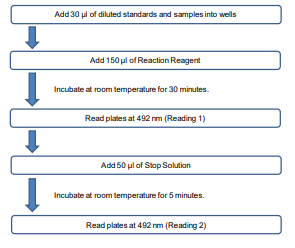
PLATE MAPPING
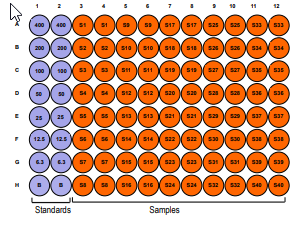
NOTES BEFORE USING ASSAY
NOTE 1: It is recommended that the standard and samples be run in duplicate.
NOTE 2: Warm up all buffers to room temperature before use.
NOTE 3: This kit contains animal components from non-infectious animals and should be treated as potential biohazards in use and for
disposal.
ASSAY PROCEDURE
1. Prepare Standard Dilutions: The recommended standard range is 6.3 - 400 µg/ml. Dissolve one vial of creatinine standard in 1 ml of
PBS (60264) for the 400 µg/ml standard. Then serially dilute 400 g/ml of creatinine standard solution with Solution A. For example,
mix 100 µl of the standard (400 µg/ml) with an equal volume of Solution A in a 0.5 ml microcentrifuge tube to make a 200 µg/ml solution,
and then repeat it five more times for 100, 50, 25, 12.5, and 6.3 µg/ml solutions. The remaining 400 µg/ml standard stock can be stored
at 4°C for use in a second assay. Chondrex, Inc. recommends making fresh serial dilutions for each assay.
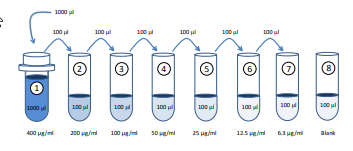
2. Prepare Sample Dilutions: Centrifuge samples at 10,000 rpm at 4°C for 3 minutes to remove insoluble materials and lipids. Dilute the
supernatants with Solution A if it is necessary. Two to three different sample dilutions are recommended if the creatinine levels in the
samples are unknown.
3. Add Standards and Samples: Add 30 µl of Solution A (blank), standards, and samples to designated wells.
4. Prepare Reaction Reagent: Mix Solution A and Solution B 1:4 in a glass tube. For example, one well requires 40 µl of Solution A mixed
with 120 µl of Solution B. The following shows a protocol for preparing reaction reagent by the number of strips in an assay (including
extra volume).
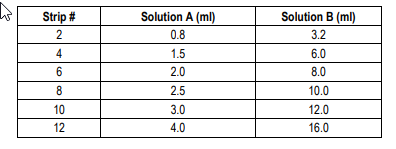
5. Add Reaction Reagent: Add 150 µl of reaction reagent to each well and incubate at room temperature for 30 minutes.
6. Read Plate: Read the OD values at 492 nm (Reading 1).
7. Add Stop Solution: Add 50 µl of Stop Solution to each well and incubate at room temperature for 5 minutes.
8. Read Plate: Read the OD values at 492 nm (Reading 2).
CALCULATING RESULTS
1. Calculate the average of the duplicate OD values of Reading 1 for the blank, standards, and test samples.
2. Subtract the “blank” (B) values from the averaged OD values in step 1 (Corrected Reading 1).
3. Calculate the average of the duplicate OD values of Reading 2 for the blank, standards, and test samples.
4. Subtract the “blank” (B) values from the averaged OD values in step 3 (Corrected Reading 2).
5. Subtract the Corrected Reading 2 from Corrected Reading 1 in corresponding wells. These are the Corrected OD values. This step
eliminates background noise OD values caused by the samples themselves.
6. Plot the Corrected OD values of standards against the concentration of creatinine (µg/ml). Using a log/log plot will linearize the data.
Figure 1 shows a representative experiment where the standard range is 6.3 - 400 (µg/ml)
7. The µg/ml of creatinine in samples can be calculated using regression analysis on the Corrected OD sample values.
Figure 1 - A Typical Standard Curve for the Creatinine Assay Kit
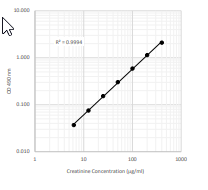
Table 1 - Reproducibility Data for the Creatinine Assay Kit


